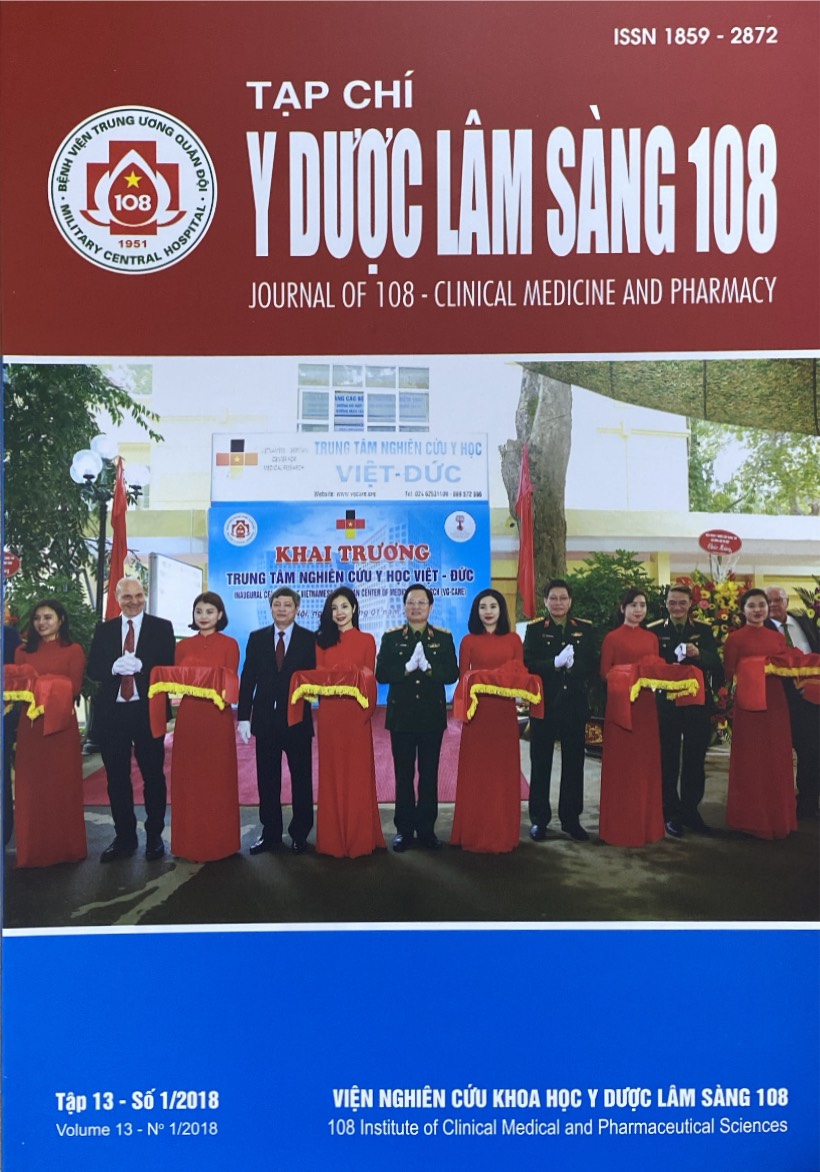The evaluation of unilateral approach for bilateral decompression of degennerative lumbar spinal stenosis with microscope and tubular retractor system
Main Article Content
Keywords
Abstract
Objective: To assess the results of minimally invasive surgery approach for degenerative lumbar spinal stenosis. Subject and method: From March 2015 to September 2016 the surgery was performed on 62 patients (25 men and 37 women; 32 - 81 years; median age, 58 years). We carried out bilateral interlaminar fenestration and unroofing for the decompression of nerve roots by using a unilateral approach. Result: Average of surgical time was 65.56 minutes for per level. Surgical results were classified by JOA score. Excellent: 71%, good: 14.5%, fair: 11.3%, poor: 3.2%. VAS back pain improved from 5.26 ± 1.03 to 0.62 ± 1.09, VAS radicular pain improved 7.19 ± 1.32, ODI improved from 69.23 ± 5.52 to 17.17± 4.49. The increasing of spinal canal on MRI: A-P diameter: 4.75mm (pre-op: 6.86 ± 1.22; post-op: 11.51 ± 1.50) and dural sac cross-sectional area: 70.25mm² (pre-op: 52.83 ± 16.13, post-op: 127.5 ± 34.33). Complications: Dural tear were 2 (3.2%), transient neuralgia in 07 (11.3%) and instability 01 (1.6%). Conclusion: Minimally invasive surgery is safe, effective and lower rate of complication for degenerative lumbar spinal stenosis.
Article Details
References
2. Hwang, Sang-won, Rhim SC, and Roh SW (2008) Outcomes of unilateral approach for bilateral decompression of lumbar spinal stenosis: Comparison between Younger and Geriatric Patients. 5(2): 51-57.
3. Iwatsuki, Koichi, Toshiki Y, and Masanori A (2007) Bilateral interlaminar fenestration and unroofing for the decompression of nerve roots by using a unilateral approach in lumbar canal stenosis. Surgical Neurology 68(5): 487-492. doi:10.1016/j.surneu.2006.12.044.
4. Kerr SM, Tannuory C, White AP (2007) The role of minimally invasive surgery in the lumbar spine. Current Orthopaedics 17: 183-189.
5. Lauryssen, Carl (2010) Technical advances in minimally invasive surgery - direct decompression for lumbar spinal stenosis. Spine 35(26): 287-293. doi:10.1097/BRS.0b013e3182023268.
6. Nomura, Kazunori, and Munehito Y (2017) Assessment of the learning curve for microendoscopic decompression surgery for lumbar spinal canal stenosis through an analysis of 480 cases involving a single surgeon. Global Spine Journal 7(1): 54-58. doi:10.1055/s-0036-1583943.
7. Pao, Jwo L, Wein CC, and Po QC (2009) Clinical outcomes of microendoscopic decompressive laminotomy for degenerative lumbar spinal stenosis. European Spine Journal 18(5): 672-678. doi:10.1007/s00586-009-0903-2.
8. Papavero, Luca, Marco T, Erik F, Christina K, Manfred W, and Ralph K (2009) Lumbar spinal stenosis: Prognostic factors for bilateral microsurgical decompression using a unilateral approach. Neurosurgery 65(6 SUPPL. 1). doi:10.1227/01.NEU.0000341906.65696.08.
9. Takaso, Masashi, Toshiyuki N, Takayuki I, Takamitsu O, Kensuke F, Masaki U, Wataru S et al (2011) Less invasive and less technically demanding decompressive procedure for lumbar spinal stenosis-appropriate for general orthopaedic surgeons? International Orthopaedics 35(1): 67-73. doi:10.1007/s00264-010-0986-8.
10. Usman, Muhammad, Mumtaz A, Khalid K, Mohammad I, Naeem-ul-Haq, Raza A, and Mohammad A (2013) Unilateral approach for bilateral decompression of lumbar spinal stenosis: A minimal invasive surgery. Journal of the College of Physicians and Surgeons Pakistan 23(12): 852-856. doi:12.2013/JCPSP.852856.
 ISSN: 1859 - 2872
ISSN: 1859 - 2872
